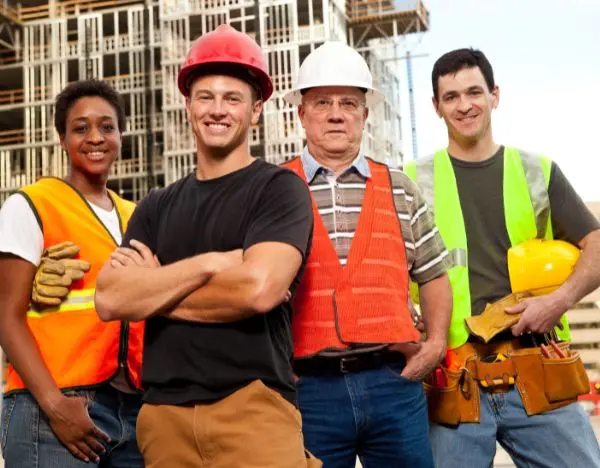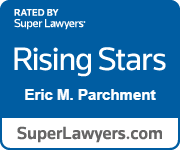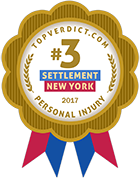Ready to Fight for You
Who Is Protected By New York Labor Laws?
New York’s labor laws serve as a cornerstone in protecting the rights and welfare of workers across the state. These laws encompass a wide array of protections, including wage and hour laws, discrimination laws, and safety regulations. Understanding who is protected by New York labor laws is essential for both employers and employees to ensure compliance and to safeguard their rights.
What Are New York’s Labor Laws That Protect Construction Workers?
New York’s labor laws provide robust protections specifically tailored to construction workers, recognizing the high-risk nature of their work. These laws are designed to ensure safe working conditions, fair compensation, and recourse for workers injured. Here, we outline the key provisions and laws protecting New York construction workers.
New York Labor Law Sections 200, 240, and 241
These sections are pivotal for construction worker protection:
Section 200 mandates that all work sites be constructed, equipped, arranged, operated, and conducted to provide reasonable and adequate protection for the lives, health, and safety of all persons employed therein or lawfully frequenting such places. It requires employers to take reasonable care to protect the health and safety of employees.
Section 240(1), often referred to as the “Scaffold Law,” provides extraordinary protection for workers involved in height-related risks by holding employers and property owners liable for accidents caused by gravity, such as falls from heights or being struck by a falling object, when proper safety devices are not provided.
Section 241(6) mandates specific safety practices that must be followed on construction sites, including requirements for construction, demolition, and excavation work to ensure worker safety. It requires that areas in which construction, excavation, or demolition work is being performed be so constructed, shored, equipped, guarded, arranged, operated, and conducted as to provide reasonable and adequate protection and safety to the persons employed therein or lawfully frequenting such places.
The New York State Industrial Code
The Industrial Code is a set of regulations that outlines specific safety standards and practices for construction sites, including but not limited to, requirements for protective gear, safe use of machinery, and protocols for hazardous materials. These regulations are detailed in Rule 23 of the New York State Industrial Code, which is specifically designed to protect construction workers.
Workers’ Compensation Laws
New York’s Workers’ Compensation Law ensures that construction workers who are injured or become ill as a direct result of their job are entitled to compensation without the need to prove fault. This includes coverage for medical care, rehabilitation costs, and lost wages due to time off from work. Importantly, this law also provides benefits to the families of workers who have died as a result of workplace injuries or illnesses.
The Fair Labor Standards Act (FLSA)
While the FLSA is a federal law, it applies to construction workers in New York by ensuring they receive overtime pay for hours worked over 40 in a workweek at a rate not less than time and one-half their regular pay rates.
New York City’s Local Laws
Additional local laws provide further protections for construction workers in New York City. For example, Local Law 196 of 2017 requires workers at certain job sites to undergo safety training and obtain a Site Safety Training (SST) Card to ensure they are educated about potential hazards and safe work practices.
Who Do Those Laws Protect in the Construction Field?

The laws and regulations governing construction work in New York are designed to protect a broad range of individuals engaged in the construction field. Here’s a breakdown of who is covered:
Construction Workers
This is the most obvious group protected by these laws. It includes laborers, craftsmen, and tradespeople directly involved in the physical construction and alteration of buildings and infrastructure. These workers benefit from safety regulations, wage protections, and the right to a workplace free from recognized hazards.
Apprentices and Trainees
Individuals who are in training or serving as apprentices on construction sites are also protected under these laws. They are afforded the same safety and health protections as more experienced workers, ensuring a safe learning environment.
Foremen and Supervisors
While their roles may involve more oversight and less physical labor, foremen and supervisors are still covered by New York’s construction safety laws. Their safety is equally important, and they are also subject to the same regulations that protect their teams.
Independent Contractors
New York’s labor laws extend protections to independent contractors working in the construction industry. This includes ensuring they have a safe work environment and are protected under specific sections of the law, such as the Scaffold Law, provided their work arrangement falls within the law’s application.
Part-time and Temporary Workers
Even if someone is not a full-time or permanent employee, they are still protected under these laws while working on a construction site. This ensures that all individuals on a site have the same level of protection, regardless of their employment status.
Engineers and Architects
While primarily involved in the planning, design, and oversight of construction projects, engineers and architects are also protected when their work requires on-site work. This ensures their safety during inspections, evaluations, or any on-site work.
Volunteers
In some cases, volunteers who work on construction projects (e.g., for non-profit organizations) are also covered by certain safety regulations, ensuring they are not exposed to unnecessary risks.
When Do New York Labor Laws Become Particularly Important?
New York labor laws become particularly important in several contexts, playing a crucial role in protecting workers’ rights and ensuring fair and safe working conditions across various industries, including construction. Here are key situations where these laws are especially crucial:
Workplace Accidents and Injuries
When a worker is injured on the job, New York labor laws, such as the Workers’ Compensation Law and specific provisions like the Scaffold Law (Labor Law Section 240), become critical. They ensure that workers receive proper medical care and compensation for their injuries, and they hold employers or site owners accountable for unsafe conditions.
Wage and Hour Disputes
Disputes over unpaid wages, overtime, and other compensation issues are common scenarios where labor laws are essential. The Fair Labor Standards Act (FLSA), along with New York State Minimum Wage Act and Labor Law, protect workers from being underpaid and ensure they receive the wages they are legally entitled to.
Discrimination and Harassment
New York State Human Rights Law and federal laws provide protections against discrimination and harassment in the workplace based on race, color, religion, gender, national origin, age, disability, sexual orientation, gender identity, and other protected characteristics. These laws are vital in creating a fair and equitable work environment.
Unsafe Work Conditions
Labor laws become particularly important when workers are subjected to unsafe or unhealthy working conditions. Regulations enforced by the Occupational Safety and Health Administration (OSHA) and New York State safety standards ensure that workplaces adhere to safety protocols, thereby reducing the risk of accidents and health issues.
Wrongful Termination and Retaliation
When an employee is wrongfully terminated or retaliated against for exercising their rights under labor laws, such as filing a complaint about workplace safety or discrimination, these laws provide a mechanism for redress. They protect employees from being unfairly punished for asserting their rights.
Union Activities and Collective Bargaining
Labor laws are crucial in protecting the rights of workers to organize, join unions, and engage in collective bargaining. These activities are protected under the National Labor Relations Act (NLRA) and New York labor laws, ensuring workers can advocate for better wages, benefits, and working conditions.
Changes in Employment Laws
When new labor laws are enacted or existing laws are updated, it becomes particularly important for both employers and employees to understand their rights and obligations under these changes. For example, updates to minimum wage laws, paid family leave, and sick leave laws directly affect employment practices and worker benefits.
How To Report a Violation of NY Labor Laws
Reporting a violation of New York Labor Laws is a crucial step in ensuring that workplaces adhere to the standards set forth for employees’ safety, fairness, and well-being. Here’s a step-by-step guide on how to report a violation:
1. Identify the Violation
First, identify the nature of the violation. This could include unpaid wages, unsafe working conditions, discrimination, harassment, or any other breach of labor laws. Collect any evidence you might have, such as pay stubs, emails, photographs of the workplace, or witness statements.
2. Internal Reporting (Optional)
Depending on the situation and your comfort level, you might consider reporting the violation internally through your employer’s human resources department or a supervisor. Some issues may be resolved this way. However, if the issue is severe, you feel uncomfortable doing so, or the attempt yields no results, you should proceed to report externally.
3. Contact the New York State Department of Labor (NYSDOL)
For most labor law violations, including unpaid wages, overtime issues, and safety violations, the NYSDOL is the primary agency to contact. You can file a complaint in several ways:
- Online: Visit the NYSDOL website and navigate to the appropriate section to file a complaint online.
- By Phone: Call the NYSDOL Labor Standards Division to report the violation or to get advice on how to proceed.
- In-Person: If preferred, visit a local NYSDOL office to file your complaint in person.
4. Occupational Safety and Health Administration (OSHA)
For workplace safety and health violations, you can also report directly to OSHA, a federal agency that handles such concerns:
- Online: File a complaint through the OSHA website.
- By Phone: Call the nearest OSHA office or the OSHA 24-hour hotline to report urgent safety and health hazards.
- In-Person: Visit your local OSHA office to file a complaint or discuss your workplace conditions.
5. New York State Division of Human Rights
If your complaint involves discrimination or harassment, you can file a complaint with the New York State Division of Human Rights:
- Online: Utilize their website to submit a complaint form.
- By Mail: Download the complaint form from their website, complete it, and mail it to the address provided.
- In-Person: You can also visit one of their offices to file a complaint directly.
6. Gather and Submit Documentation
Regardless of where you file your complaint, be prepared to provide detailed information about the violation and any evidence you have collected. This may include your employment records, any communication regarding the issue, and testimonies from co-workers if they are willing to support your claim.
7. Follow Up
After filing your complaint, follow up if you do not receive a response within a reasonable time frame. Keep records of all communications related to your complaint.
Legal Assistance
Consider seeking legal advice if the situation is complex or unsure about the best course of action. Construction accident lawyers can provide guidance specific to your situation and may help you navigate the complaint process more effectively.
Stand Up for Your Rights with Support
Facing a New York Labor Law violation? Don’t navigate this challenge alone! At The Law Offices of Mark E. Weinberger P.C., we’re here to provide the guidance and legal support you need.
Contact us now for a consultation, and let’s ensure your workplace rights are fully protected.
How Can We Help You?
Fields marked with an * are required
"*" indicates required fields




